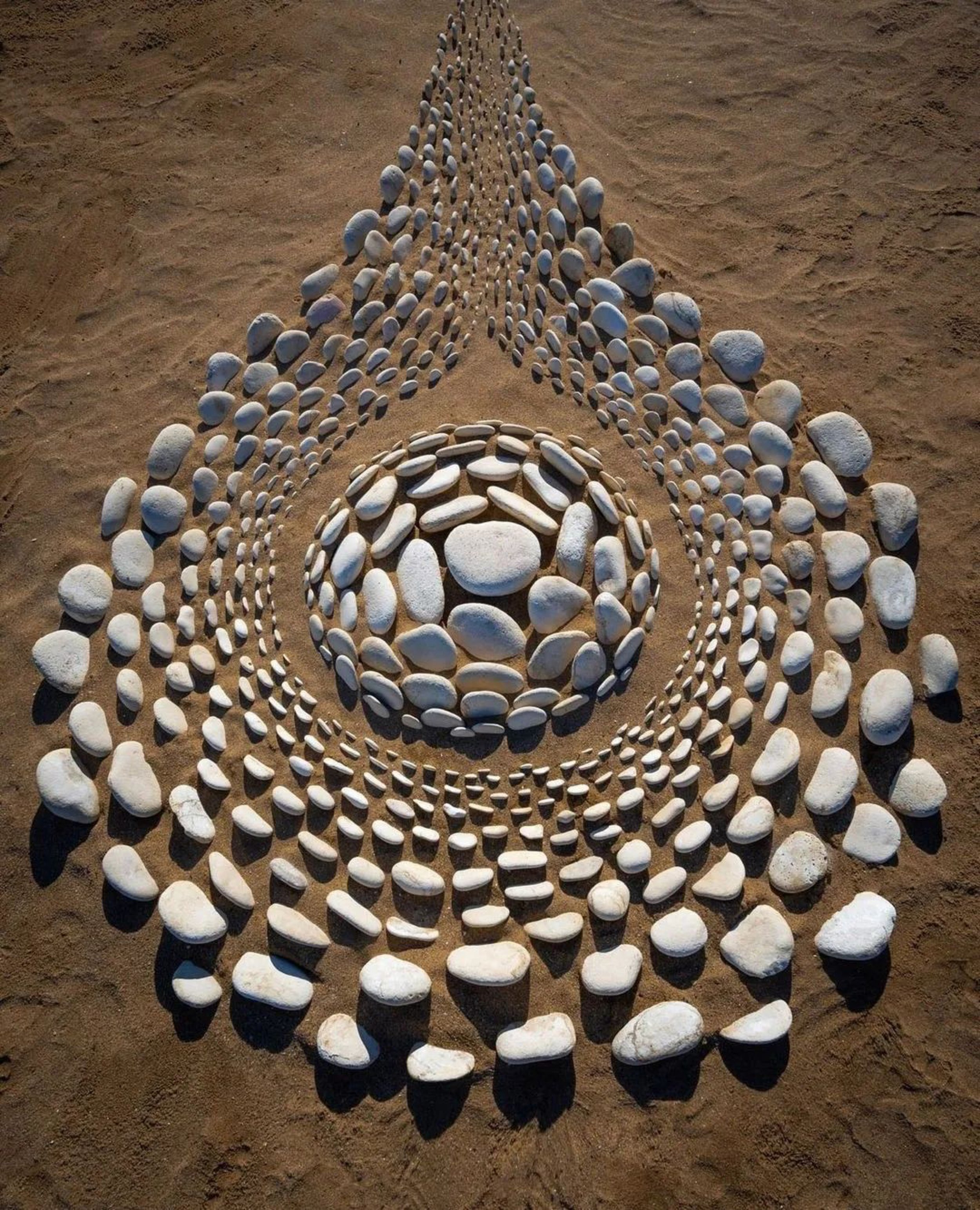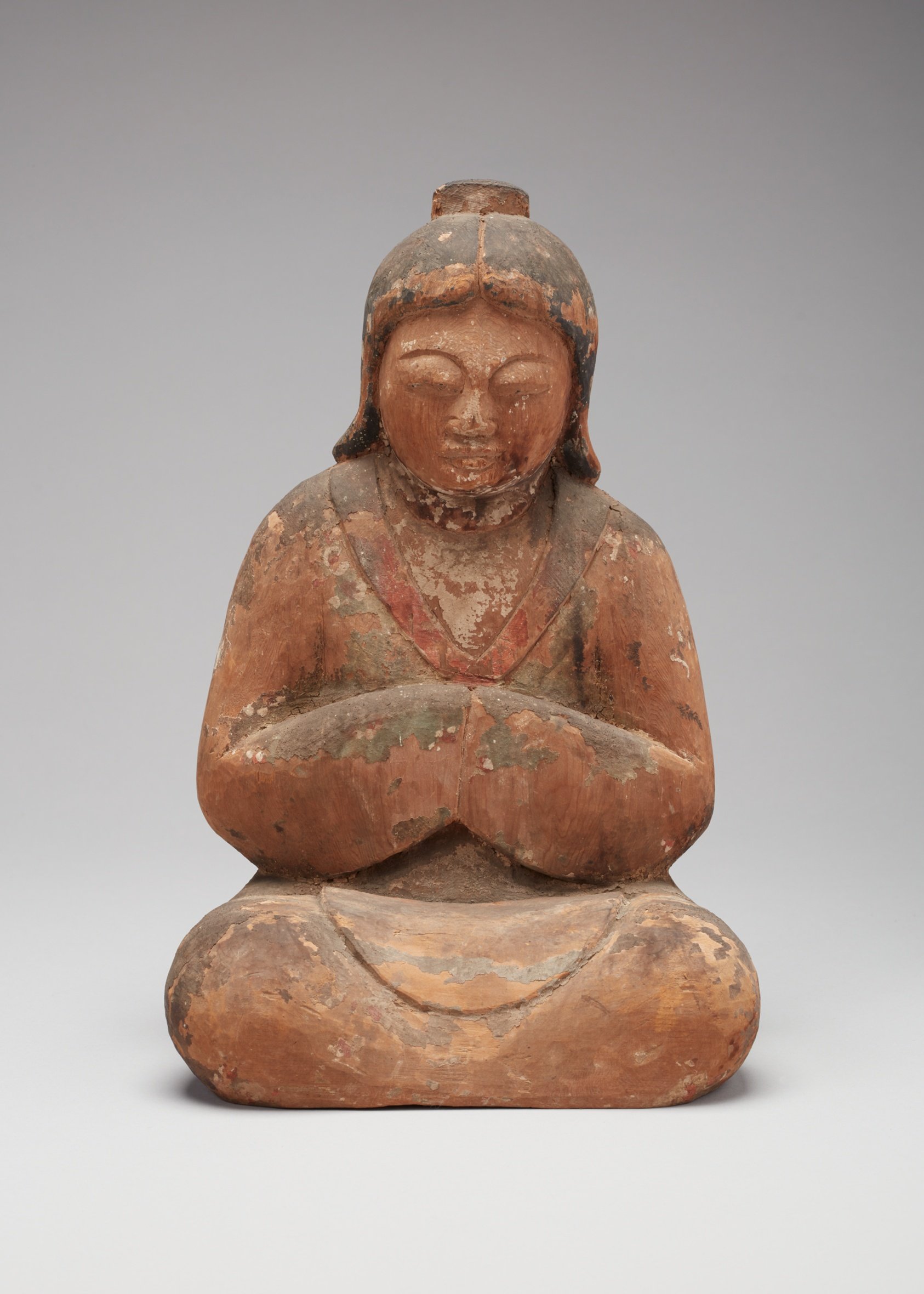A connective anatomy approach to chronic jaw pain and TMJ.
Read MorePost-Viral Recovery & Immune Support
Strengthening Health Through Late Winter
Read MoreRooted and Resilient: The Art of Settling the Qi in the Body
Descending the qi in the body brings steady strength and flexibility.
Read MoreWhat Do We Mean By Balancing Hormones?
Understanding Estrogen: seeking balance in constant change.
Read MoreUnderstanding Hashimoto's Thyroiditis
Knowledge is empowerment.
Read MoreChronic Low Back Pain: Integrative Approaches to Healing Degenerative Discs
Low back pain stemming from lumbar disc compression and degeneration is a widespread condition that affects millions of individuals, significantly impacting their quality of life. The complexity of this pain arises from its multifactorial nature—nerve irritation, muscular imbalances, inflammation, and disc deterioration. Conventional approaches such as medication and surgery are often viewed as primary treatment options, but they do not represent the full scope of healing strategies available.
In fact, studies consistently show that a combination of therapies is more effective than any single approach in treating chronic low back pain. A 2020 review in Journal of Orthopedic Research concluded that patients who received integrative care for lumbar disc degeneration had significantly better outcomes in terms of pain reduction, mobility, and quality of life than those who relied solely on conventional treatments.
The Role of a Comprehensive Approach
Integrative and adjunctive therapies offer a proactive approach to treating lumbar disc compression and degeneration. Combining the strengths of various treatments—manual therapy, acupuncture, physical therapy, laser light therapy, and supplements—has been shown to lead to faster recovery, reduced pain, and improved overall well-being.
Clinically Relevant Anatomy
The lumbar spine, consisting of five vertebrae (L1-L5), is responsible for supporting the upper body while allowing for movement in multiple directions—bending, twisting, and flexing. Between each vertebra lies an intervertebral disc, which cushions the spine and distributes pressure evenly.
These discs have two main components: the nucleus pulposus, a gel-like core that provides flexibility and shock absorption, and the annulus fibrosus, a tough outer ring that contains the nucleus. Over time, the nucleus loses water content, leading to disc degeneration. This degeneration can flatten or bulge the disc, compressing spinal nerves and causing pain, including sciatica, which is often felt as pain radiating down the leg.
The facet joints behind the vertebrae are also important. These small joints provide mobility but can become arthritic due to disc degeneration, adding to pain and stiffness. Surrounding muscles, ligaments, and fascia are equally crucial in maintaining spinal stability, and when imbalances occur, pain can worsen. Holistic treatments emphasize improving the health of these structures, improving mobility, reducing inflammation, and addressing the root causes of low back pain.
Anatomy of Degenerative Discs
The Economic Value of Integrative Care for Low Back Pain
Incorporating integrative healthcare strategies like manual therapies, acupuncture, physical therapy, and naturopathic medicine for chronic low back pain has been proven via research studies to be an economically smart decision over the long term. Complementary and Alternative Medicine (CAM) research studies show that patients who incorporate these approaches early and often experience significant cost savings over the long-term by reducing the need for expensive interventions and dependence on conventional approaches. In studies, naturopathic care has been associated with a 32% reduction in healthcare costs for low back pain, while acupuncture not only provides effective pain relief but also cuts down on medical visits and dependence on pharmaceuticals. A preventative and proactive approach is both clinically effective and a financially-astute option.
Manual Therapy for Structural Support
Manual therapies, including myofascial release, craniosacral therapy, and fascial counterstrain, are highly effective in relieving pain associated with lumbar disc issues. By targeting soft tissue and fascial restrictions, these therapies help improve range of motion, reduce muscle tension, and support spinal alignment.
Myofascial Release: Myofascial release is a type of clinically-focused, gentle massage that focuses on releasing tight fascia, the connective tissue that surrounds and invests muscles. Myofascial dysfunction and muscular imbalance is a major contributor to chronic low back pain, especially in disc degeneration cases. Releasing fascial restrictions can restore normal movement and relieve pressure on affected discs, not to mention help to gently treat the chronic spasming and guarding surrounding the involved spinal segments.
Craniosacral Therapy: Cranialsacral therapy addresses the flow of cerebrospinal fluid around the spinal cord. This gentle therapy promotes fluid flow and reduces tension in the spinal cord, improves nerve function, and decreases inflammation, which is beneficial for those suffering from chronic low back pain.
Fascial Counterstrain: This technique focuses on easing fascial tension through specific positioning. It can alleviate pain by restoring normal fascial mobility, easing muscle guarding, and supporting spinal function.
Acupuncture for Reducing Chronic Low Back Pain
A review published in Pain Medicine highlighted that acupuncture not only reduces the intensity of low back pain but also improves function over time. By stimulating specific points in the body, acupuncture encourages the release of neurotransmitters like endorphins and serotonin, which naturally relieve pain and reduce inflammation. It also enhances blood flow to the discs and surrounding muscles, supporting recovery and reducing inflammation.
Physical Therapy and Rehabilitative Exercises
Physical therapy is a cornerstone in the treatment of lumbar disc degeneration, providing essential support for both pain relief and long-term spinal health. Targeted exercises strengthen the core, restore proper movement patterns, and improve posture, all of which are critical in reducing the strain on compressed or degenerated discs.
Strengthening the core muscles—including the abdominals, obliques, and lower back muscles—plays a pivotal role in supporting the spine. Without a strong core, the spine bears more of the load, which can worsen degeneration. Additionally, physical therapy helps improve muscle balance and posture, preventing further disc damage and reducing pain.
Dynamic stimulation through therapeutic exercises also increases blood flow to the discs, which can promote healing. The fibrous capsules surrounding the discs are poorly vascularized, so finding tolerable movement patterns that functionally increase circulation to these tissues is a key component to ensuring tissue repair. A study in Spine Journal concluded that patients who engaged in physical therapy saw significant improvements in mobility and pain levels compared to those who received standard care. By safely re-strengthening the body and focusing on proper biomechanics, patients can avoid aggravating their condition and promote long-term recovery.
The Importance of Movement and Addressing Mental-Emotional Aspects
Chronic pain caused by lumbar disc degeneration can take a serious toll on mental and emotional health. Constant pain often leads to fear and avoidance of movement, as individuals may associate activity with worsening symptoms or further damage. However, avoidance can contribute to deconditioning and increased pain, creating a vicious cycle.
Patients with degenerative disc disease often benefit from learning more about pain management and consciously recognizing the interplay between pain, mood, and movement. Any rehabilitative exercise program or manual therapy approach should also support patients at the intersection of mental/physical health, hep them address their fears of movement, learn movement patterns that support their condition, and improve their coping strategies for both acute and chronic pain.
A key point in addressing these concerns is emphasizing that staying active is essential for maintaining spinal health. Studies show that low-impact aerobic exercises increase blood and nutrient flow to spinal structures, reduce pressure on the discs, and prevent further degeneration. Patients should also be educated on the importance of avoiding prolonged single positions, which can exacerbate pain.
Laser Light Therapy (Photobiomodulation)
Photobiomodulation, or low-level laser therapy (LLLT), is an emerging treatment for lumbar disc pain. This non-invasive therapy uses specific wavelengths of light (typically 810-850 nm) to penetrate the skin, stimulating cellular repair and reducing inflammation. Studies have shown that LLLT can significantly reduce pain and improve mobility in patients with chronic low back pain. The therapy promotes healing by enhancing collagen production and accelerating tissue repair, which is especially beneficial in supporting disc health. Recent studies have shown clinically relevant improvements after three treatments per week for 12 weeks, so for many people, investing in an FDA-approved at-home device may be the most cost-effective and convenient option.
Nutrient Support for Disc Health
Disc degeneration is a condition in which the intervertebral discs lose height and hydration. It is associated with the aging process in general, but can be worsened by inadequate nutrient supply to the intervertebral discs. Therefore, providing nutritional support through specific supplements is essential for maintaining disc height and promoting disc health.
Nutrients like glucosamine, chondroitin sulfate, and methylsulfonylmethane (MSM) are crucial for nourishing the intervertebral discs, reducing inflammation, and supporting the repair of cartilage and connective tissue. These compounds can help slow the progression of disc degeneration and reduce the likelihood of further compression. A 2020 study in BMC Musculoskeletal Disorders showed that glucosamine supplementation may help in maintaining disc height by preserving the hydration and structural integrity of the intervertebral discs. Glucosamine supports the production of glycosaminoglycans, which are crucial for the water-retention capacity of discs, thus improving disc cushioning and flexibility.
Herbal extracts like curcumin offer additional anti-inflammatory benefits. A study in Journal of Orthopaedic Research (2019) demonstrated that curcumin slows the progression of intervertebral disc degeneration by inhibiting pro-inflammatory markers and oxidative stress, both of which contribute to the breakdown of disc tissue. Additionally, curcumin was found to promote the synthesis of proteoglycans in the extracellular matrix, which are key for maintaining disc hydration and elasticity. (Note that approximately 5% of the population experiences digestive side effects from curcumin supplementation. In those cases, boswellia (boswellia serrata) is a viable alternative for those who experience digestive symptoms from curcumin. Several studies support the anti-inflammatory effects of boswellia, alleviating pain and inflammation associated with conditions like degenerative disc disease.
Omega-3 fatty acids have also been shown to reduce systemic inflammation, contributing to reduced pain and improved spinal health. A 2020 study published in Spine indicated that omega-3 supplementation could help improve disc hydration by reducing the inflammatory cytokines that accelerate disc degeneration. Another study published in Journal of Neuroinflammation (2019) found that omega-3 fatty acids play a role in modulating the extracellular matrix, which is critical for maintaining disc integrity and hydration.
Topical Pain Relief Options
Topical pain-relieving creams, including those containing cannabidiols (CBD), offer effective alternatives for managing low back pain arising from degenerative disc disease. While CBD can sometimes carry a stigma, usually due to misconceptions, it's important to note that topical applications containing CBD do not induce psychoactive or systemically altering states. Instead, these plant compounds can provide localized relief without the side effects often associated with oral pain relief medications.
On Cannabinoids: Pain-Relieving Molecules Found Throughout the Plant World
Cannabinoids refer to a group of molecular structures that can be found in many plant species including black peppercorn, hemp, echinacea, and cacao, not just cannabis. These molecules interact with our own human nervous system that has a 'built-in or endogenous cannabinoid system, which modulates our pain perception, mood, and inflammatory processes. The following is a simplified physiological explanation of how cannabinoids can be beneficial for chronic low back pain stemming from degenerative disc disease, even for those who might be skeptical about using it.
Reducing Inflammation: Cannabinoids have been shown to inhibit pro-inflammatory cytokines that contribute to the overactive pain signaling involved in chronic pain.
Modulating Immune Cell Activity: Cannabinoids interact with specific endogenous receptors on immune cells, leading to reduced inflammation and less pressure on nerve endings.
Altering Pain Pathways: Cannabinoids inhibit the enzyme that breaks anandamide, leading to higher levels of this endocannabinoid, which has pain-relieving properties.
Interacting with Serotonin Receptors: Cannabinoids have been shown to interact indirectly with serotonin receptors, which are involved in mood regulation and can influence pain perception. By enhancing serotonin signaling, CBD may help improve the emotional response to pain, making it more manageable.
Reducing Anxiety and Stress: Chronic pain is often exacerbated by anxiety and stress. CBD has anxiolytic (anxiety-reducing) effects, which can help lower the overall perception of pain.
Research supports the daily use of topical CBD for managing chronic pain. A study published in Pain Medicine (2020) found that topical CBD significantly reduced pain intensity in patients with chronic musculoskeletal pain, including those with conditions like degenerative disc disease. Another study in Journal of Pain Research (2021) reported that topical CBD applications resulted in reduced inflammation and improved mobility in patients suffering from low back pain, indicating its efficacy as a part of a comprehensive pain management strategy.
Incorporating topical CBD into a pain relief regimen allows patients to benefit from its anti-inflammatory and pain-modulating properties while minimizing risks associated with higher side effect profiles of other therapies. As a non-invasive option, topical formulations can be an effective part of a multi-faceted approach to managing low back pain.
Therapeutic Synergy: Building a Cross-Disciplinary Team
Chronic low back pain due to disc degeneration is an area of medicine where the research has shown that a multi-modal approach has cumulative benefits. A comprehensive approach should integrate insights from conventional care providers such as review of updated images of the affected areas (xrays and MRIs), evaluation for potential medications and surgical options, while emphasizing multiple avenues of conservative care.
REFERENCES
Ahlgren, B. M., et al. "Omega-3 Fatty Acids in the Treatment of Disc Degeneration: A Review." Journal of Neuroinflammation, vol. 16, no. 1, 2019, article 113.
Barkhordari, Mehdi, et al. "Effects of Myofascial Release Techniques on Pain, Disability, and Quality of Life in Patients with Chronic Low Back Pain: A Randomized Controlled Trial." Journal of Back and Musculoskeletal Rehabilitation, vol. 35, no. 5, 2022, pp. 921-928.
Castro-Sánchez, Adelaida María, et al. "Craniosacral Therapy for the Treatment of Chronic Low Back Pain: A Randomized Controlled Trial." Pain Medicine, vol. 21, no. 2, 2020, pp. 206-217.
Furlan, Andrea D., et al. "Massage for Low-back Pain." Cochrane Database of Systematic Reviews, vol. 9, 2022, Article No. CD001929.
Hayden, Jillian A., et al. "Exercise Therapy for Chronic Low Back Pain: A Systematic Review and Meta-analysis of Randomized Controlled Trials." Spine Journal, vol. 20, no. 9, 2020, pp. 1474-1487.
Jaeger, Beate, et al. "Effect of Low-Level Laser Therapy on Pain and Disability in Patients with Chronic Non-Specific Low Back Pain: A Randomized Controlled Trial." Spine Journal, vol. 22, no. 1, 2022, pp. 41-49.
Järvinen, E. et al. "Glucosamine Supplementation for Maintaining Intervertebral Disc Height and Hydration." BMC Musculoskeletal Disorders, vol. 21, no. 1, 2020, article 185.
Kumar, V., et al. "Boswellia serrata in the Management of Osteoarthritis: A Systematic Review." Clinical Rheumatology, vol. 35, no. 1, 2016, pp. 159-169. DOI: 10.1007/s10067-015-2871-1.
Russo, Ethan B., et al. "Topical Cannabidiol Is Well Tolerated in Patients with Chronic Pain: A Randomized, Double-Blind, Placebo-Controlled Trial." Journal of Pain Research, vol. 14, 2021, pp. 285-293.
Spine. “Effects of Omega-3 Fatty Acids on Intervertebral Disc Degeneration.” vol. 45, no. 12, 2020, pp. 815-821.
“The Anti-Inflammatory Effects of Curcumin on Intervertebral Disc Degeneration.” Journal of Orthopaedic Research, vol. 37, no. 5, 2019, pp. 1072-1081.
Vickers, Andrew J., et al. "Acupuncture for Chronic Pain: Individual Patient Data Meta-analysis." Pain Medicine, vol. 22, no. 5, 2021, pp. 906-916.
On Anxiety: an Earth-Centered View
Returning to our center.
Read MoreA Gentle Look at Anxiety
Understanding our nervous system + underlying causes of anxiety.
Read MoreThe Whole Universe is One Bright Pearl
Metaphor in medicine and the intangible benefits of acupuncture.
Read MoreHarmonizing with Early Spring
Guidance for aligning body, mind, spirit with the energy of early spring.
Read MoreLens Flare, oil on canvas, Laura Berger
Holistic Approaches to Nurture Your Metabolism
Health comes in all shapes, sizes, and body expressions. Subvert conventional pressures on weight loss.
Read MoreIs Your Doctor Missing Something?
Why you may need a naturopathic doctor on your care team.
Read MoreThe Quiet Power of Ovulation: Holistic Impacts for Women's Health Across the Lifespan
A consolidation of the burgeoning research on the health benefits of natural ovulation.
Read MoreImage: Photographer and Artist Chantal Convertini
Kidney Vitality: Mirroring the Peace + Strength of Water
Protect inner vitality by understanding the Kidney organ and its associated qualities.
Read MoreThe Structure of Deep Rest
The qualities of deep rest and their importance for healing mind, body, and spirit.
Read MoreThe Wisdom of the Lungs
The energetics of the Lung Organ Network and how it impacts physical, emotional, and spiritual health.
Read MoreHarmonizing with the Season of Autumn
How to embrace the energetics of autumn.
Read MoreWorking with a Virtual Naturopathic Doctor in Minnesota
Benefits of virtual naturopathic care consultations.
Read MoreUnderstanding Functional Freeze: Impacts on Body, Mind, Mood, and the Healing Response
Explore a deeply ingrained survival response in the nervous system and how it influences our capacity to heal.
Read MoreNurturing the Heart Center: Tending a Delicate Balance
Therapies you can try at home to help nurture the Heart and Pericardium channels and calm anxiety.
Read More



















